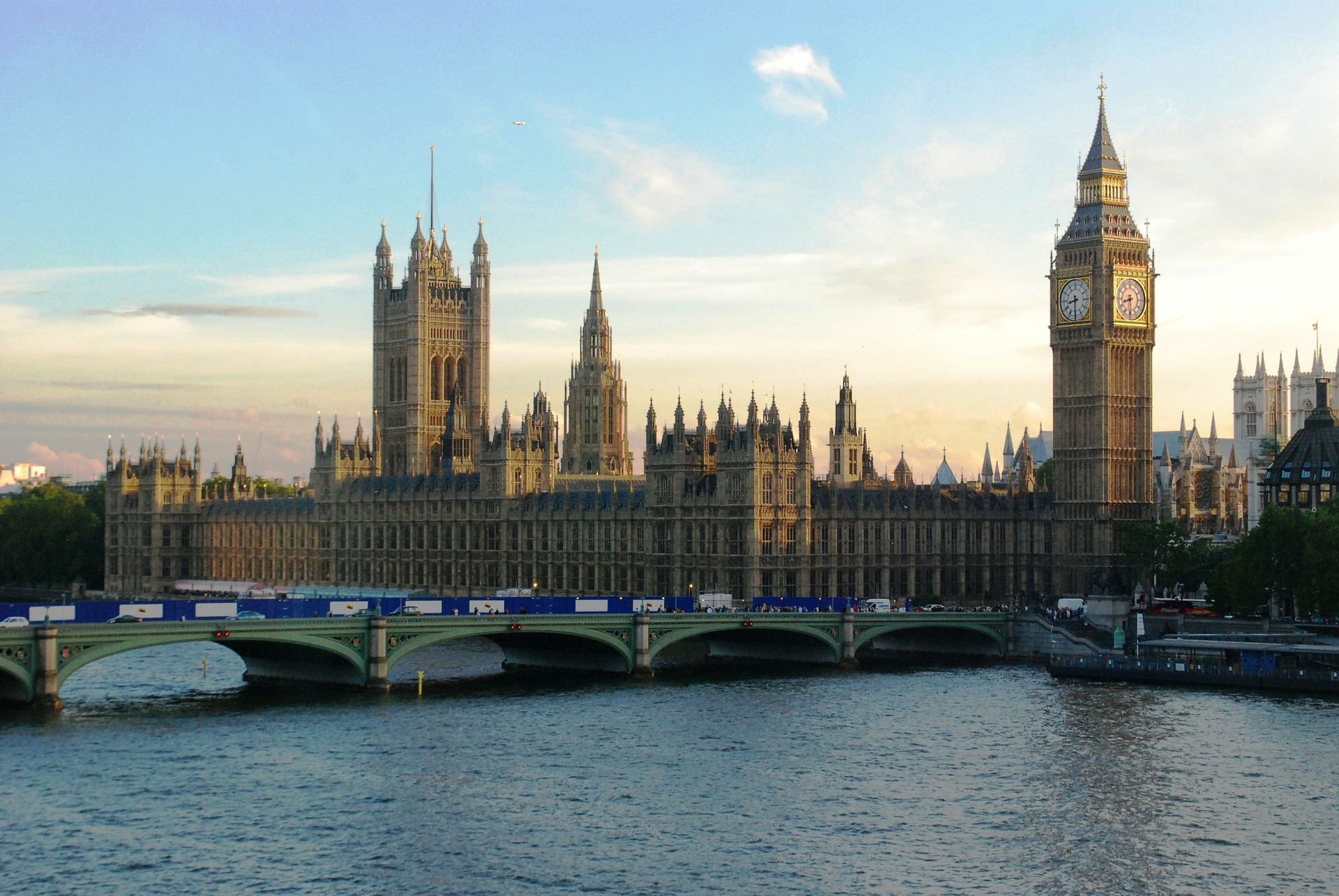
Clear the Lobby: What laws are MPs voting on this week (w/c 4 November)?
November 3, 2019
Writing a First-Class Dissertation: An Introduction to the Series
November 7, 2019The round-up of the stories that a budding Student Lawyer should be aware of this week. Sign up here to get these updates in your inbox every week.
Trademark law
Bentley Trademark Battle
Reported by Ellena Mottram
A Manchester-based clothing firm has won a twenty-year trademark battle with Bentley Motors, which could mean the car maker is forced to destroy all of its branded clothing.
On Friday the 1st of November, the High Court ruled Bentley Motors had infringed trademarks owned by Brandlogic who own the Bentley Clothing brand. Those trademarks were infringed as Bentley Motors had used the Bentley name on its own goods.
As a result, in the future, Bentley Motors cannot use the name Bentley on its clothing range in the UK. In addition to limiting to use of the Bentley name on clothing, the judgment also limits the clothing Bentley Motors can produce. In the future, the production must be limited to ‘jackets, silk ties, caps and scarfs. Any clothing of headgear which falls outside this finite list can no longer be produced by the carmaker.
Bentley Motors stated they were ‘extremely disappointed’ by the court’s decision, adding they would consider making an appeal against the decision. If they are not granted permission to appeal, then they may be forced to destroy their collection of branded clothing.
If Bentley Motors do appeal, then it will extend a legal battle that first began in 1998 when Bentley Clothing approached Bentley Motors about its use of the Bentley name after Bentley Motors began selling clothing in 1987. At this time Chris Lee, the co-owner of Bentley Clothing offered to license Bentley Clothing’s trademarks to the carmaker.
Bentley Motors, however, declined this offer and despite failing to cancel Bentley Clothing’s trademarks at the UK Intellectual Property Office, Bentley Motor’s continued to sell a range of clothing.
Judge Richard Hacon stated that there had been a period where Bentley Motors’ use of the trademark only amounted to ‘honest concurrent use’. However, he ruled that in later years the carmaker’s use of the trademark amounted to a ‘steady encroachment of Bentley Clothing’s goodwill’.
Bentley Clothing began trading in 1962 and makes t-shirts, sweatshirts and hats with prices ranging from £25 to £45. By contrast, Bentley Motor’s website advertises clothing for as much as £2400. As the solicitor acting for Bentley Clothing highlighted, the case ‘shows the power of trademarks to protect the rights of even the smallest of companies against large multinationals’. The company with an annual turnover of less than £100,000 has secured a victory, at least for now, against Bentley Motors who had a turnover of €1.5bn in 2018
The decision comes as a great relief to the owners of Bentley Clothing, who have seen a recent decrease in profits and turnover. The co-owner of Bentley Clothing highlighted his family has spent over £50,000 on legal fees and suffered as lenders and stockists feared legal action.
Intellectual Property
Shanks v Unilever [2019]: Employee Compensation
Reported by Laurence Tsai
The UK Supreme Court recently ruled on a long-running dispute between Professor Shanks and a subsidiary of Unilever, whereby Professor Shanks, a former employee of the subsidiary, received compensation in the amount of £2 million for creating an invention in 1982 because it was of “outstanding benefit” to the Unilever group.
Professor Shanks had invented a system for measuring the glucose concentration in blood, serum or urine using capillary action. As he had created the Shanks patents as an employee in the normal course of his duties, Unilever owned the Shanks patent under section 39 Patents Act 1977 (“PA 1977”). Unilever had granted seven licences to various companies and later sold them to Inverness Medical Innovations (“IMI”) for a total sum of £24 million (a minuscule amount compared to the group’s overall profits).
Professor Shanks had previously failed to receive compensation at a UK IPO Hearing, High Court and Court of Appeal. The hearing officer at the IPO hearing had determined that due to the size and nature of Unilever’s business, the benefit provided by the Shanks patents fell short of being outstanding. The Court of Appeal rejected the appeal. In a landmark decision, the UK Supreme Court (UKSC) found that the Shanks patents were of outstanding benefit to Unilever and that he was entitled to a fair share of that benefit. Given that many potential claims would be against larger corporations, meaning that the benefit derived from a patent would be insignificant compared to a corporation’s overall profit, most cases have not progressed this far. Indeed, Professor Shanks complained that Unilever would always be “too big to pay”.
Furthermore, few cases heard by the courts have not provided much assistance in this respect. In the case of Kelley & Anor v GE Healthcare, the court held that “outstanding benefit” means “exceptional” and must be beyond the normal duties of an employee for which he is paid. In response to this, the UKSC reaffirmed that a proper assessment of “outstanding benefit” with regards to all the circumstances should not render an employer “too big to pay”. In the present case, the UKSC broadly stated that the rewards Unilever enjoyed were substantial and significant, were generated at no significant risk, reflected an unusually high rate of return and stood out in comparison with the benefit Unilever derived from other patents. In interpreting section 41 PA 1977, the UKSC concluded that £2 million represented a fair share for Professor Shanks.
The long-anticipated ruling may potentially open floodgates for aggrieved or disgruntled employee inventors, who believe they are entitled to a “fair share” for their invention. It is, therefore, hoped that the UKSC has clarified this issue with its guidance and that inventors give careful consideration to this case before commencing unmeritorious claims.
However, considering Professor Shanks’ long-standing battle lasted 13 years, individual inventors may reconsider whether it is worthwhile to bring any new claims – especially due to the complexities of many patent cases and that consideration is limited to “stand out” cases only. In that respect, many corporations can learn from this case as a way to build positive, meaningful relationships with employee inventors and appropriately recognize or reward their technical “outstanding” contributions in order avoid a claim under the statutory regime.
You can find out more here or here.
Immigration: Accommodation for Asylum Seekers
Recent changes for Asylum Seekers in accommodation provided through UK Visas and Immigration
Reported by Jutha Cheewat
Three main changes are affecting the rights of asylum seekers living in accommodation provided through the UK Visas and Immigration (UKVI).
The first has to do with the security of tenure. An asylum seeker living in the specified accommodation will now be deemed as an ‘excluded occupier’ under the Protection from Eviction Act 1977.
The change can be found under the provisions of the Housing Act 1985, part 6 of the Immigration and Asylum Act 1999. This means that the tenancy granted will no longer be as permanent as the prior ‘secure tenancy’. Having said that this new rule does not apply to accommodation provided by a local authority subject to specific conditions.
In addition, the change was also to address ongoing issues namely housing conditions, harassment and domestic abuse, according to Shelter Legal.
In terms of Housing conditions, it was stated clearly that the so-called ‘occupancy agreement’ signed before an asylum seeker move in gives rise to an obligation for a landlord to maintain and manage the property.
There will also be an expressed contractual agreement specify the need for landlords to follow the complaints procedure in cases where harassment or internal problems are reported. They must take action within the 7 days. Asylum seekers will be supported throughout by the Asylum Helpline.
However, the Protection from Eviction Act 1977 currently does not cover Harassment and domestic abuse for asylum seekers living in accommodation provided through UKVI. They will have to either contact the UKVI or police should such complaints arise. Nevertheless, any racial complains are to be dealt with by the relevant authority. An asylum seeker can also challenge the UKVI if the UKVI fails to provide alternative accommodation after such an incident.
Find out more here.
Youth Court System
UK Youth court system issue
Reported by Emma Ducroix
The youth justice system in England and Wales was declared “chaotic and dysfunctional”.
Following almost a decade of cuts and court closures, the children’s commissioner has warned confusion and poor child protection. In England and Wales, children are waiting months for convictions, appearing without adult support and being wrongly placed in the dock, a Guardian investigation finds.
An investigation into the youth justice system in England and Wales has been opened: “Children in the dock”. No other EU country puts such young children on trial. Most of them do not use an adversarial system that can see children separated from their parents and lawyers via bulletproof glass in what is essentially an adult courtroom.
Officially, the focus in youth courts is on rehabilitation, tackling the underlying causes of youth offending. But although there has been an 88% drop in the number of children cautioned or convicted since 2007, reoffending rates have increased. Just over 40% of children who go to court re-offend within a year.
According to a tribunal interrogated by the Guardian:
• Cases involving children now take almost 40% longer than they did in 2010, with the slowest region, Sussex Central, taking 491 days on average to deal with a child from offence to conviction.
• Reoffending rates for children are higher than they were ten years ago.
The proportion of offenders aged 10-17 who reoffended was 12 percentage points higher than adult criminals aged over 21.
The proportion of children who received a youth caution or sentence who were black, Asian or minority ethnic has almost doubled since 2010.
Indeed, children who end up in trouble now are disproportionately likely to be of black, Asian or minority ethnicity. They are vastly more likely to be in care and they are extremely likely to have ADHD, autism spectrum disorders and communication difficulties.
• Children are being brought to court in handcuffs and locked behind bulletproof glass in a secure dock after committing minor offenses or breaches, despite courts being told to put only the most dangerous children in the dock.
• Some children appear in court without legal representation or an appropriate adult to support them.
• So many youth courts have closed that gang members end up in the same waiting rooms as rivals from other areas, with sometimes violent results.
• Thousands of children are left in limbo for months or even years when released “under investigation”.
The ministry of justice (MOJ) views the youth justice system as a success story after the number of children cautioned or convicted in England and Wales dropped. This reduction has resulted in huge cost savings for a department with a budget that has been cut by a quarter since 2010.
But experts warn that children who now come to court have grown up in families where drug and alcohol misuse, physical and emotional abuse and offending is common. They need far more intensive support and intervention to prevent reoffending.
Greg Stewart, a criminal lawyer who served for nine years as the Law Society’s youth justice practitioner, said “The residue that is left is the really difficult stuff, so you’ve got kids in gangs, kids who are in pupil referral units at the age of 12, kids who are excluded from education, kids who can barely read or write, kids with drug-addict parents – kids who need top intervention.”
Youth courts in England and Wales are housed in magistrates courts, half of which have been closed since 2010, meaning children have to travel up to 50 miles for their hearings. Stewart said there was gang “war” breaking out in Bromley magistrates court, which now deals with cases from all over south London after 15 out of 33 courts in the capital closed since 2010.
According to Longfield: “It is not an efficient or indeed child-friendly environment where you could really help a child. Not a productive environment. [It’s] chaotic, dysfunctional and not meeting standards.”
Charlie Taylor, the head of the Youth Justice Board in England and Wales, said he was concerned about children still being placed in a secure dock behind bulletproof glass when they were accused of relatively minor offenses – often for just breaking their curfews. He adds: “We know that kids are being kept in the cells overnight for a minor breach.” To continue: “You look more guilty if you are behind a glass dock and there is evidence which shows juries are more likely to convict people who sit behind a glass dock.” In 2016, Taylor carried out a review of the youth justice system for the government which stated: “Children should only be placed in the secure dock where they are at risk of absconding or committing acts of violence.”
One knifepoint robbery trial witnessed by the Guardian saw two teenagers have to give their evidence through the gap in the bullet-proof glass rather than being allowed into the witness box, as per their legal right.
Find out more here.



